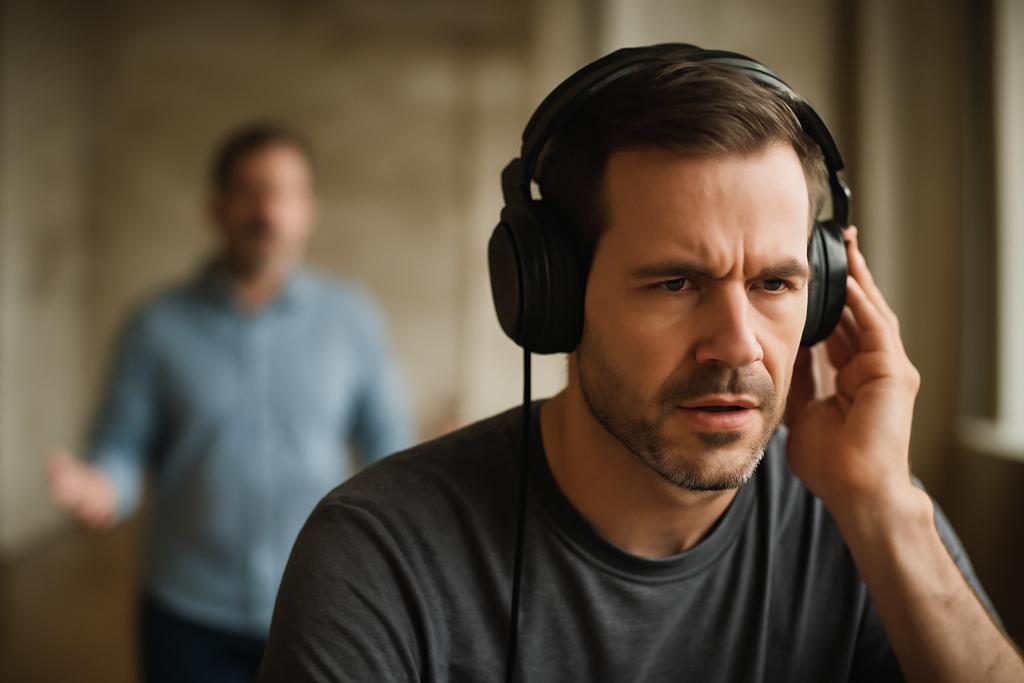Untangling Voices from the Room’s Whisper
We’ve all been there: a voice echoing off walls, turning crisp words into a muddled haze. Reverberation—the lingering echoes in a room—can make speech sound distant, muffled, or downright confusing. It’s the bane of clear communication, whether you’re on a video call, using voice assistants, or transcribing meetings. But what if we could magically peel away those echoes and hear the speaker as if they were right next to you?
Researchers at the University of Illinois Urbana-Champaign, led by Yulun Wu and colleagues, have taken a bold step toward that magic. Their new method, called USD-DPS (Unsupervised Speech Dereverberation via Diffusion Posterior Sampling), promises to recover clean, echo-free speech from recordings made by multiple microphones—even when the room’s echo patterns are unknown.
Why Reverberation Is a Puzzle Worth Solving
Imagine shouting in a cathedral. Your voice bounces off stone walls, pillars, and ceilings, creating a complex tangle of echoes. Microphones pick up not just your original voice but a cocktail of reflections arriving at different times. This reverberation blurs the clarity and intelligibility of speech, frustrating listeners and machines alike.
Traditional approaches to fix this problem often rely on supervised learning—training neural networks on vast datasets of paired clean and reverberant speech. But this requires painstakingly crafted data and often struggles when faced with new rooms or microphones. On the other hand, unsupervised methods try to work without such labeled data, but they tend to be less effective or slower.
Diffusion Models: Breathing Life into Sound Restoration
Enter diffusion models, a class of generative AI that has recently dazzled the world by creating stunning images and audio from noise. These models learn how to reverse a process that gradually adds noise to data, effectively learning the essence of clean speech. The team harnessed this power to guide the dereverberation process, treating the problem as an inverse puzzle: given the noisy, echo-filled recordings, what’s the most plausible clean speech that could have produced them?
But there’s a catch. To reverse the echoes, you need to understand the room’s acoustic fingerprint—technically called the room impulse response (RIR). It’s like knowing how the room shapes sound waves. The challenge? The RIR is usually unknown and varies across microphones.
Smart Estimation Meets Speed: The USD-DPS Innovation
Previous methods tried estimating the RIR for each microphone channel independently, which quickly becomes a computational nightmare as the number of microphones grows. USD-DPS cleverly sidesteps this by focusing on estimating the RIR for just one reference microphone using a sophisticated model, while estimating the others analytically through a fast mathematical trick called forward convolutive prediction (FCP).
This hybrid approach balances accuracy and efficiency. It respects the physical reality that echoes across microphones share similar decay patterns, so it doesn’t waste time reinventing the wheel for each channel. The result is a method that not only cleans speech better but does so faster than previous unsupervised techniques.
Listening to the Results: What USD-DPS Brings to the Table
When tested on a challenging dataset simulating real rooms with multiple microphones, USD-DPS outperformed all existing unsupervised methods by a significant margin. It improved perceptual quality and intelligibility, meaning listeners would find the cleaned speech clearer and easier to understand.
Compared to supervised methods—which require extensive training on labeled data—USD-DPS held its own, especially in scenarios with fewer microphones. Its unsupervised nature means it can adapt to new environments without retraining, a huge advantage in the wild diversity of real-world acoustics.
Why This Matters Beyond the Lab
Imagine voice assistants that understand you perfectly no matter where you are, or hearing aids that strip away room echoes to deliver crystal-clear conversations. Conference calls that sound like everyone’s in the same room, even if they’re scattered across the globe. USD-DPS is a step toward these realities.
Moreover, the approach’s unsupervised design means it can be deployed in new settings without the need for costly data collection and retraining. It’s a flexible, elegant solution to a stubborn problem.
Looking Ahead: Echoes of Possibility
The team envisions extending USD-DPS to tackle even more complex audio challenges, like separating overlapping speakers or enhancing speech in noisy, reverberant environments. The marriage of diffusion models with smart acoustic estimation opens a rich frontier for audio technology.
In a world increasingly mediated by voice, where clarity is king, innovations like USD-DPS remind us that sometimes, the best way to hear truth is to listen past the echoes.










